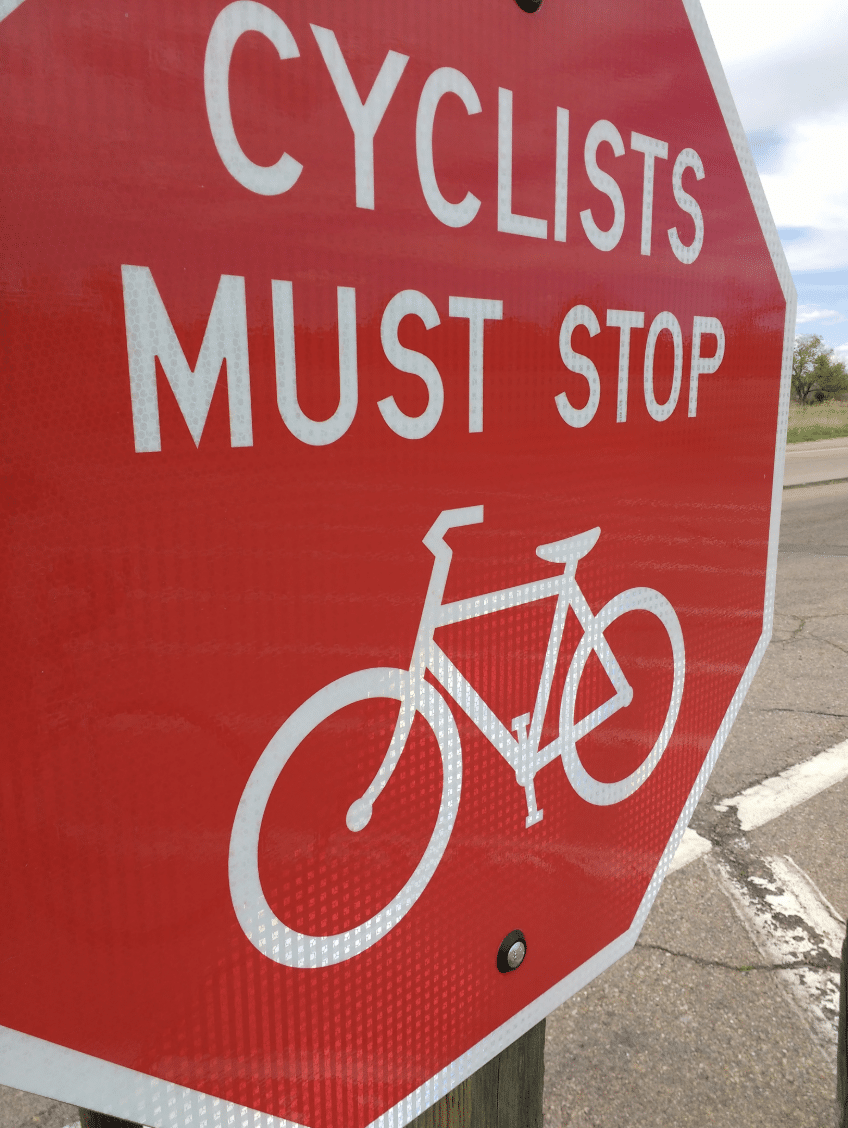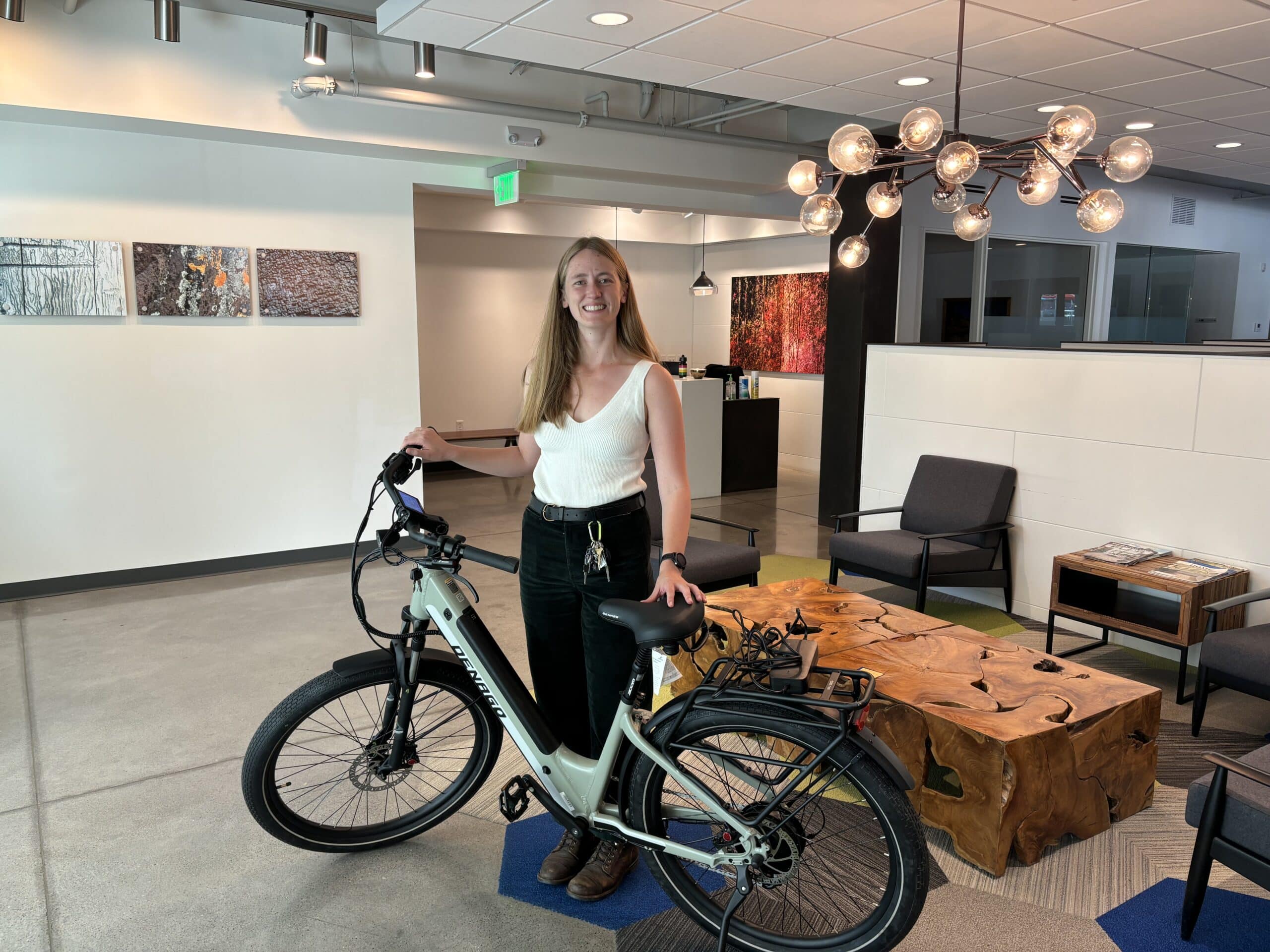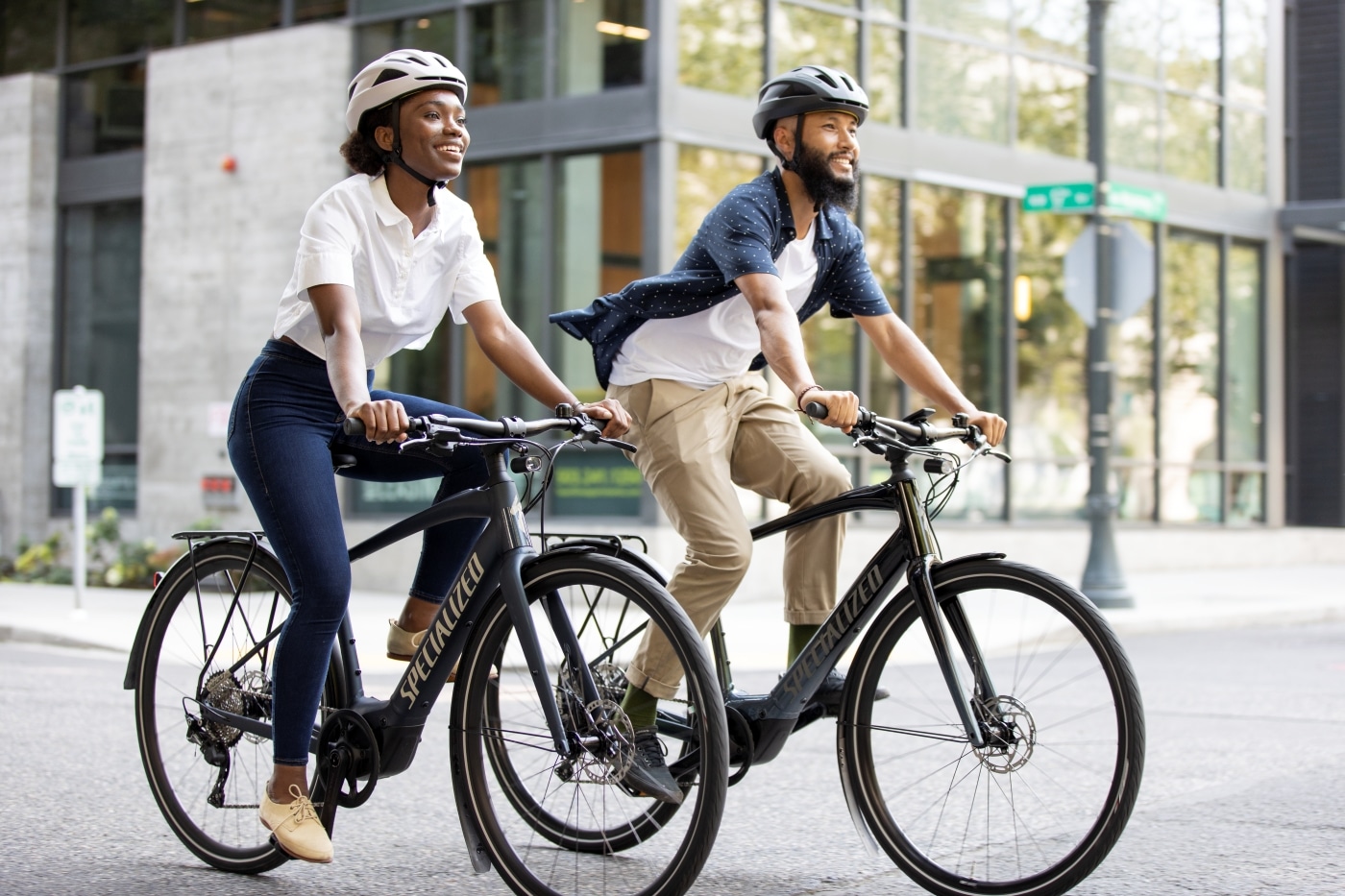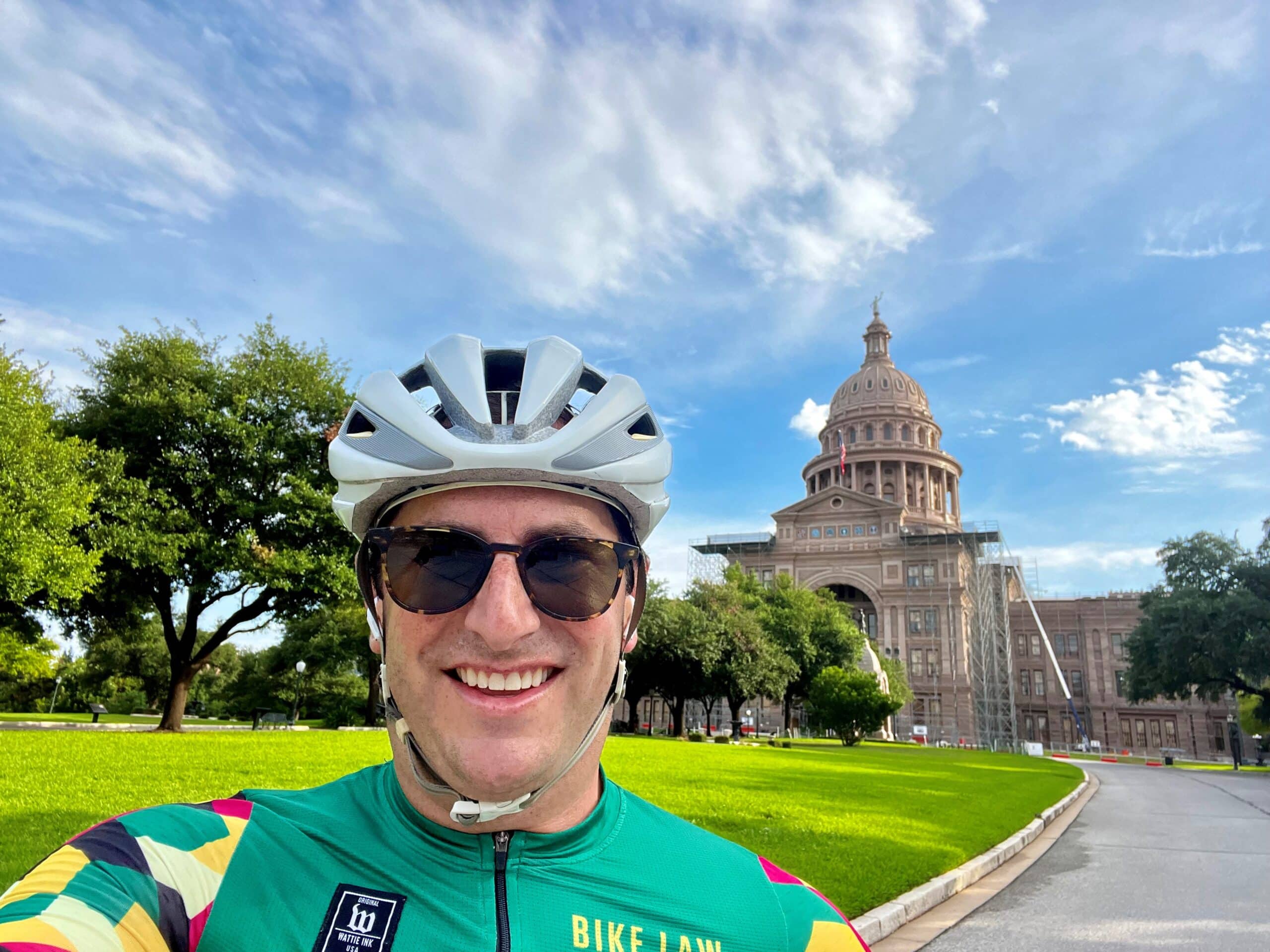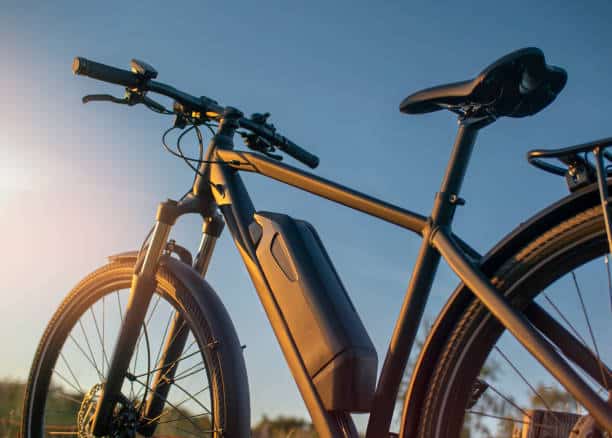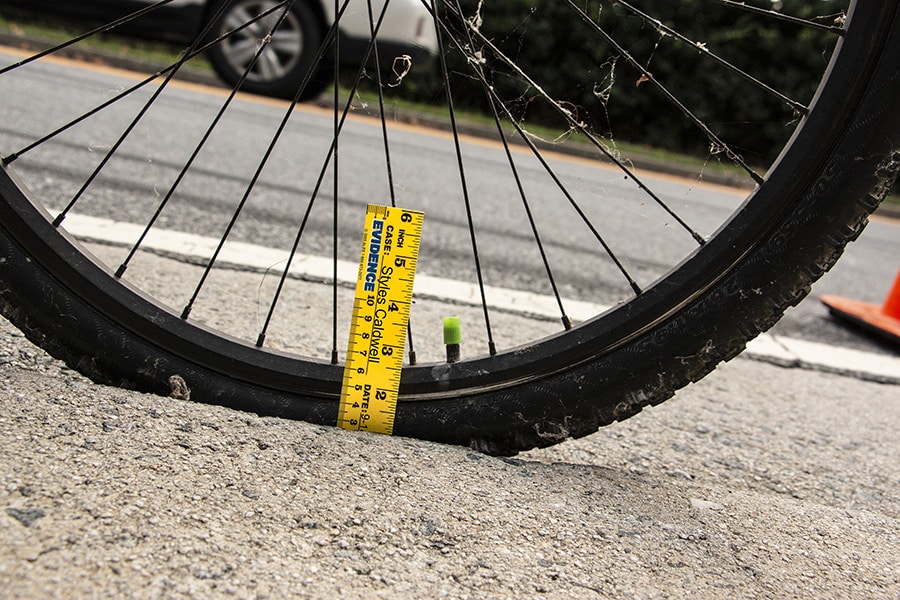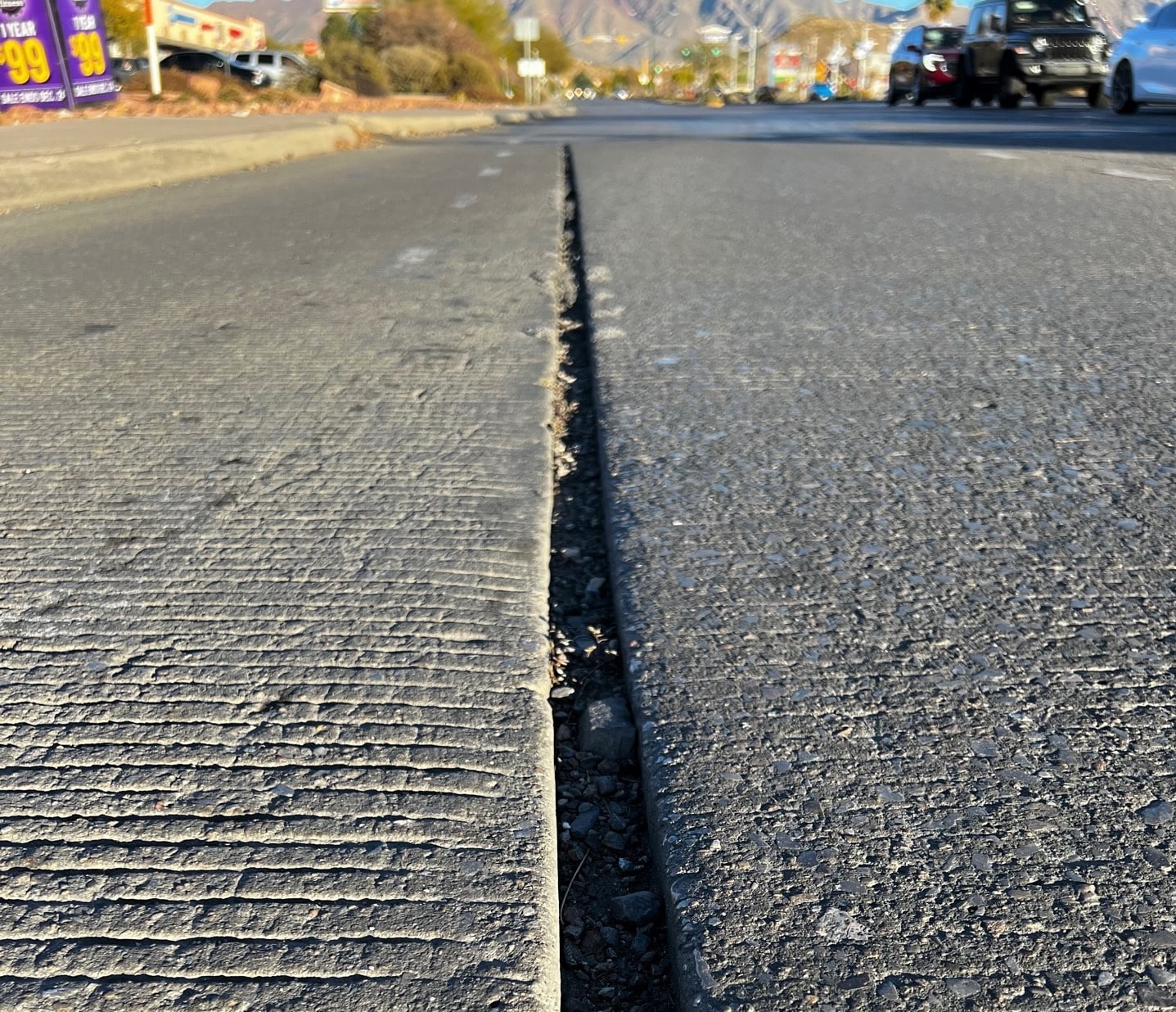You’re riding your bike through one of Portland’s neighborhoods. Like me, you avoid the main thoroughfares, where traffic is fast and furious, and too many drivers are too busy distracting themselves to pay much, if any, attention to the road. The neighborhood side streets are much more relaxed and will still get you to where you’re going.
But there’s one little fly in that ointment. The reason all of that auto traffic is on the main arterial is because it’s designed to move as much traffic as possible as fast as possible. Roads are wider, with more lanes, speed limits are higher, and stop lights are few and far between. Venture off the main arterial, and you’re in a different world—narrow residential streets, lower speed limits, and lots and lots of stop signs. All of this combines to make the neighborhood streets more attractive for riding.
Except for those ubiquitous stop signs.
Consider: In the North Park Blocks, there’s a stop sign every 200 feet. That’s a nuisance for drivers, having to hit the brakes every 200 feet. But for cyclists, it doesn’t just mean hitting the brakes every 200 feet, it also means having to come from a complete stop, back up to speed, and back to a complete stop, every 200 feet. When a driver starts from a stop, he only has to press the gas pedal a bit, and off he goes. When I start from a stop, I have to call on my muscles to get me back up to speed and across the intersection.
It would be a lot easier if I could just maintain my speed when there’s no cross-traffic. But because stop signs are ubiquitous on these side streets, it would be illegal for me to maintain my momentum. I’m required by law to come to a complete stop, even when there’s no cross-traffic (full disclosure: I actually do stop.) This is not only unnecessary for safety, it actually makes my ride less safe, because as I’m crossing the intersection, I’m also coming from a dead stop back up to speed, which means I have the least amount of momentum and stability just as I’m entering the intersection.
Let’s be honest here: There is nothing “bike friendly” about city infrastructure that penalizes people who are trying to ride. There are a lot of good reasons to promote cycling across America, but calling yourself “bike friendly” while making bicycling as difficult as possible really doesn’t cut it. As a starting point, “bike friendly” must mean that cycling is encouraged by actions, not just words. It must mean that we encourage cycling by making it safer and easier and more attractive, rather than more dangerous and more difficult and less attractive because of counterproductive punitive measures.
How bad is it? For over a decade, the traffic circle at Ladd’s Addition has been a hotspot in the city’s traffic sting enforcement efforts to snare cyclists ignoring stop signs. Which, when you consider that the traffic circle is a roundabout, doesn’t make any sense. Why are there stop signs on a roundabout in the first place? It completely defeats the purpose of a roundabout. But ah, the city counters, it’s not a roundabout, it’s a traffic circle. I say potato, you say potahto. Traffic circles, roundabouts, or whatever you want to call them, are by definition controlled by yield signs to enable the smooth flow of traffic through the circle. And yet here we are, year after year, dealing with traffic sting after traffic sting set up for the sole purpose of catching cyclists using a traffic circle as it was intended. Yes, the city will say that the traffic circle was never intended to be used as a traffic circle, it’s just a circular intersection with traffic flowing in a one-way direction around a central island. Potato, potahto.
But what if the rules of the road were different? What if it makes more sense to conform the rules of the road to people, than to conform people to the rules of the road? Bicycles inhabit a kind of middle-ground between a pedestrian and a motor vehicle. They’re not exactly like a pedestrian, and they’re not exactly like a motor vehicle either. If we don’t make pedestrians follow all of the rules for motorists (note, for example, that pedestrians are not required to stop at stop signs), and we don’t make motorists follow all of the rules for pedestrians, why do we insist on shoehorning cyclists into rules that aren’t a good fit? Why don’t we have rules for cyclists that recognize that we’re neither pedestrians nor motorists, while still respecting our rights to the road? The law should conform to people, not the other way around.
The law should be Stop as Yield.
What is Stop as Yield? It’s a simple concept that makes a sensible change in the Rules of the Road. Under a Stop as Yield law, bicyclists approaching a stop sign have the option to behave as if the stop sign is actually a yield sign. They are allowed to roll past, exactly as they would if it were a yield sign, and if there is no cross-traffic that has the right of way, the cyclist is allowed to proceed through without coming to a stop. On the other hand, if there is cross-traffic with the right of way, the cyclist must yield the right of way, exactly as would be required with a yield sign.
A related concept is “Red as Stop.” Under a Red as Stop law, cyclists have the option to behave as if the red light is a stop sign. This means that when a cyclist approaches a red light, the cyclist is required to come to a full stop, but may then proceed through the red light, if, after careful observation, the cyclist determines that there is no cross-traffic with the right of way.
“Stop as Yield” has been the law in Idaho since 1982, and “Red as Stop” was added to the Idaho law in 2006. But is it safe? According to the Idaho Transportation Department, there has been “no discernible increase in injuries or fatalities to bicyclists.” In fact, the first year after the Stop as Yield law passed, injuries to bicyclists actually decreased by 14.5%. In other words, decades of real-world experience on Idaho’s roads demonstrate conclusively that Stop as Yield is safe.
Stop as Yield isn’t just a pie-in-the sky fantasy, either. Ten years ago, the Oregon legislature was considering a Stop as Yield law for Oregon. Oregon cyclists were hopeful that Oregon would become the second state to adopt the Idaho law, now more commonly known as “Stop as Yield.” However, their hopes were dashed when the bill died in the House Transportation Committee.
In the intervening years, there were multiple efforts to pass a Stop as Yield law in a second state. And for years, every effort failed. But the logjam finally began to break in 2017, when Delaware adopted a limited version of the Stop as Yield law. The next year, Colorado passed legislation that standardized Stop as Yield language, and giving cities and counties the option to adopt a local Stop as Yield law with that language. Neither the Delaware nor the Colorado legislation were complete Stop as Yield laws in the vein of the Idaho law, but they were clear evidence that opposition to the Stop as Yield concept was buckling. Then, a few weeks ago, on April 1, 2019, Arkansas passed a full Idaho-style Stop as Yield law, officially becoming the second state in the country to adopt the Idaho law in its entirety.
And now, ten years after Stop as Yield was last considered in the Oregon legislature, a new version of Stop as Yield has been introduced and passed in the Senate Judiciary Committee. Under this Stop as Yield bill, cyclists would be able to treat both stop signs and flashing red lights as yield signs, but would not be able to treat a solid red light as a stop sign—they would still have to come to a full stop at a red light, and remain stopped until the light changes to green. So it’s not exactly a full Idaho style law, but it does make a sensible and necessary change to Oregon’s current law. Next stop—the Oregon State Senate floor for a vote.
Will it pass this time? Hopefully. It certainly seems like a shift in thinking is happening.
And yet, if there’s any more potent symbol of the divide between motorists and cyclists than the stop sign, I haven’t found it. Want to rile up some motorists? Ride past a line of cars queuing up at a stop sign, and cruise right on through it. Want to rile up some cyclists? Declare that if they want the right to ride on the road, they must come to a full and complete foot-down stop at every stop sign.
Here’s the thing: Motorists love to paint cyclists as “scofflaws,” but the fact is, everybody breaks the law. In Confronting the Scofflaw Cyclist, I wrote that “motorists, cyclists, and pedestrians are all really just human beings getting around by different means, and all three groups break the law, each in their own way. Motorists speed. Cyclists run stop signs. Pedestrians jaywalk.” Everybody selectively breaks the laws they think are safe to break, and carefully obeys the laws they think are dangerous to break. It’s human nature.
But despite this reality, cyclists are the ones who get singled out for special scorn as “scofflaws.” Stop as Yield has the power to cut through this Gordian knot, and shift the discussion from “obey the law” to safety, which is exactly where the debate belongs.
So let’s talk about safety. The most common questions cyclists have about stop signs revolve around what happens if they get caught running a stop sign. It’s common for new cyclists to express surprise that the traffic laws apply to them. They may not know that cyclists are required to stop at stop signs (currently, cyclists are required to stop at stop signs); they may wonder if cyclists are required to make a foot-down stop (cyclists are required to come to a complete stop at stop signs and red lights, but regardless of what some police officers may believe, cyclists are not required to put a foot down when they come to a stop); and they may wonder if they can be ticketed while riding a bike (yes, cyclists can be ticketed if they break the law, including if they roll through a stop sign. And those tickets? They’re expensive—currently, $265.).
Experienced cyclists will know the answers to these questions, but they may also question why cyclists are required to stop. The answer is not “because it’s the law.” Experienced cyclists know it’s the law, but they’re actually asking a different question: Why is it the law, when it doesn’t make any sense? And when they get ticketed, they’re angry, because they think the law is wrong, and enforcement traps are a waste of resources that do nothing to increase traffic safety.
Lost in all of this is the more serious issue: What happens if a cyclist rolls through a stop sign and gets hit by a car? As it currently sits, the cyclist is in a compromised position. The cyclist’s violation of the law will almost certainly become an issue with the driver’s insurance company, particularly if there is a police report stating that the cyclist broke the law. If there is any way that the insurance company can minimize a payout on a claim, you can bet they will go for it. The bottom line is that if you break the law by rolling through a stop sign and you get hit by a car, you’re going to be fighting an uphill battle to be compensated for your injuries.
But let’s say that Stop as Yield is the law. Now if you roll through the stop sign and get hit by a car, the issue shifts from “you broke the law so it’s your fault,” to a more nuanced discussion about right of way. Did you have the right of way? Did the driver have the right of way? Did you look for traffic before entering the intersection? Did the driver do anything illegal, like making an unsafe lane change, or speeding, or texting? This is exactly where the discussion should be in any collision, and it works to the cyclist’s benefit, because let’s face it, most people aren’t going to carelessly ride into the path of an oncoming car. The stakes are too high. But lots of people will drive carelessly, because they perceive the risks to be so much lower.
It’s time to make that shift to an emphasis on safety. It’s time to encourage cycling by making it safer and easier and more attractive. It’s time to conform the rules of the road to people.
It’s time to Greenlight Stop as Yield.
